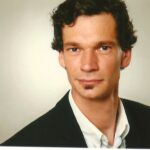How can we analyze social media discourse and dispute on collective or social memory?
Memory never sleeps. In times of worldwide crisis like the Corona pandemic and climate change, intellectuals debate (again) about the singularity of the Holocaust. Postcolonial historian A. Dirk Moses called the German memory of the Shoah the “Catechism of the Germans” (Moses 2021). Without engaging in this debate, looking at the interconnection of memory and media, he observed that subordinate spaces of discourse arise through social media. We sense that, as in many aspects of political live, the tone of the debate on social media has become very harsh, and we see the rise of many different public spheres, also counter public spheres. The impact of social media is perceptible in almost every communicative aspect of modern societies. And it seems as if researching social memory and social media has become far more complex than it had already been. So, our question here is: How to analyze social media discourse and dispute on social memory?
How to research social media discourse and dispute on social memory?
In our study, we chose the case of the average German town of Münster, where the city government had decided to rename the Hindenburg-Square in the city center in 2012. That decision was based on a report by historians about the crucial role Paul von Hindenburg had played in the seizure of power by Adolf Hitler in 1933. Paul von Hindenburg was a major figure in the German military in World War I and was elected president of the Weimar Republic in 1931 with the support of German Social democrats against his opponent in that election, Adolf Hitler. When Hitler was elected chancellor in 1933, Hindenburg was in the position to appoint Hitler as chancellor.
A group of mainly conservative citizens sensed a hegemonic interpretation of the historic role of Hindenburg by most politicians and mainstream media. They were not willing to accept the decision for the new name and launched a popular vote on renaming the square back to Hindenburg-Square. For us, the run-up to the popular vote provides information about the struggle over local collective memory and the historical consciousness of civil society (Misztal, 2005: 1336). We concentrated on the Facebook page created by the supporters of the Hindenburg-Square called “Pro Hindenburg Platz”, and conducted a qualitative content analysis of the posts and comments, because social media platforms such as Facebook “offer more immediate modes of remembering” with “posting, circulating, linking, liking, mixing and remediating” (Hoskins, 2014: 189). We were interested in how history was presented and remediated, and how the tone of the discourse was like. In other words, we were interested in the quality of the discourse, not in its quantification. Still, here are some data:
“The sample of our case study consists of posts on the Facebook page “Pro Hindenburg Square,” an initiative that was established following the council’s decision in March 2012. As this study focuses on the popular vote, the sample comprises posts that were made during campaign phase from June to September 2012. The posts were archived after the final decision. There were 231 posts with 1733 comments; thus, the average number of comments for each post was 7.5. We found 826 likes, that is, 3.6 per post. Looking at the contributors, we found 136 contributors, of which two are organizations. Of the remaining contributors, 109 individuals appeared to use their real name, 19 used an alias, and 6 cannot be identified. There are many individuals who contribute once or twice, and only a few persons wrote regularly.” (Birkner & Donk, 2020, 374)
Social memory on social media
It is quite difficult to find and condense the arguments in such a complex discourse. We conducted a qualitative content analysis of 20 selected contributions and the comments posted under these. We selected these 20 posts with regard to two parameters: They represent the range of opinions on “Pro Hindenburg Square” and show a sufficient length with pros and cons, exchange, and reactions as material for an in-depth analysis of the discourse. There are always specific challenges when analyzing Facebook communication, especially on such a highly sensitive topic. For example, there are probably deleted posts that you cannot analyze, because they are not there anymore. But there will be comments that are reactions directly addressing deleted posts. That’s one of the challenges in social media research.
We were able to detect six frames within the discourse. First, there was the argument that the historians were biased. In line with this, the second frame centered around the fact that Hindenburg had been elected in free elections and that. Further, the third frame was that his options in the historical context of the time had been very limited. The fourth frame outlined that Hindenburg should not only be seen in the context of the Nazi regime. The fifth and sixth frames differ from that of the historical discourse and have a more personal context. On the one hand, it was argued that the people connected personal memories with the Hindenburg-Square. On the other hand, the argument was that it therefore seems as if politics or the politicians had lost the connection to the people. It was especially this aspect that made us think, in the light of the Brexit vote and the Trump victory, that we detected a forerunner of the debates of the new right-wing movements in many European countries and abroad. And, if we cluster the first four frames, they provide, if not alternative facts, then certainly an alternative narrative of German history. Thus, we learned a lot from analyzing the Facebook communication of this very special group, with a qualitative approach.
In terms of the tone, the Facebook posts showed typical characteristics of social media content, such as short and/or funny remarks, as well as support by means of liking or distributing an article from the mass media. Nevertheless, beyond this, we found a substantive, issue-oriented discourse about renaming the square. So, we felt quite confident that we were not researching a completely censured communication here.
Of course, the in-depth analysis of only 20 posts and the respective comments is limited and should be combined with, for example, interviews or more quantitative oriented research. But if we want to learn more about the social memory of the people, we must understand their discourse(s) on the past, and social media seem like a very rich source of data for this type of investigation

Thomas Birkner
Dr. Thomas Birkner is a journalism researcher at the University of Münster (WWU), also working in the fields of political communication, media systems around the globe, sports communication and media and memory.

André Donk
Dr. André Donk is head of Corporate Finance and Development at a German IT Service Provider. When he wrote Collective memory and social media: Fostering a new historical consciousness in the digital age? with Dr. Thomas Birkner, he was also researching at the Department of Communication at WWU. Dr. Donk studied communications, politics and history.




